The ultimate genealogical search hunts for our earliest ancestors
Homo sapiens is a hominin. Some 20 other species may be, too. Meet your distant cousins
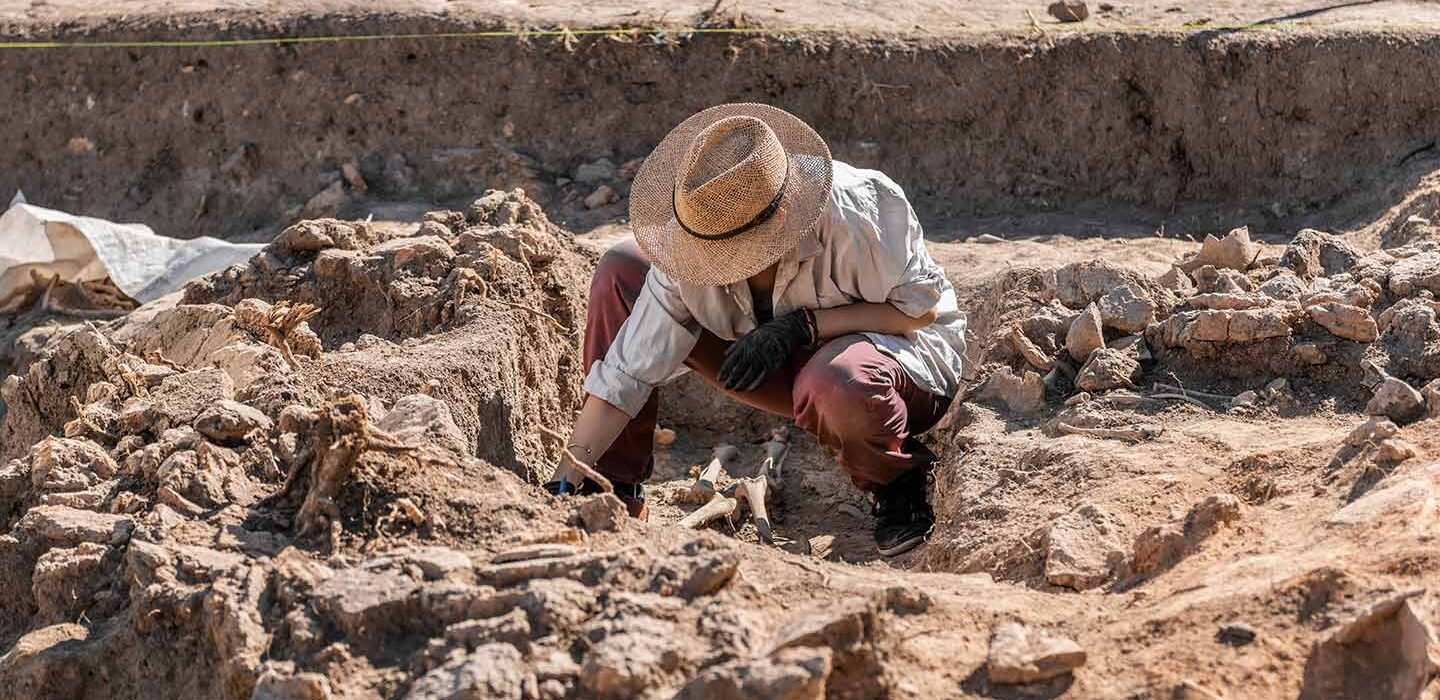
Some of our ancestors may have been roaming the planet up to 7 million years ago. Paleoanthropologists have been patiently excavating fossils of those ancient cousins and are attempting to piece together where on the human family tree we all reside.
MICROGEN IMAGES/SCIENCE PHOTO LIBRARY/Getty Images Plus
By Erin Wayman
With the availability of home DNA-test kits, people have been using samples of saliva and cells to search for, among other things, unknown relatives. But that approach will only help you narrow your search back maybe a few generations. Over the past 150 years, many scientists have attempted to hunt down our earliest ancestors — folk who trace to the first emergence of humankind.
Their search hasn’t been easy. Along the way, there have been varied clues — and plenty of stumbles. But many have forged on in a quest that continues to this day.
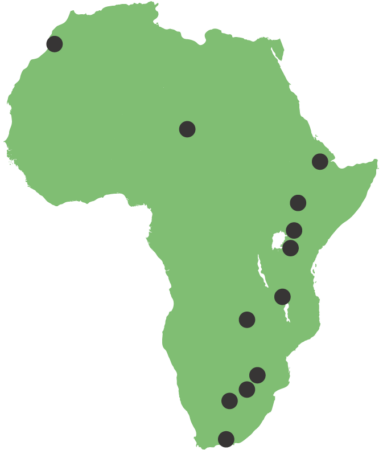
Charles Darwin was among the earlier scientists to look for the ultimate roots of our family tree. Back in 1871, he hypothesized that humankind’s earliest ancestors must have lived in Africa. His reasoning: Among all animals, the African apes — gorillas and chimpanzees — were most similar to humans. But at the time, there was no fossil evidence to support Darwin’s claim. The few human fossils known had all been found in Europe.
Over the next 50 years, more would trickle in from there and Asia. So had Darwin picked the wrong continent?
No. In 1924, miners in a South African limestone quarry made a surprising find. It was the fossilized skull of a toddler. Based on its features, Raymond Dart concluded this fossil was a fabled “missing link” between humans and apes. Dart was an anatomist at the University of the Witwatersrand in Johannesburg, South Africa. This fossil was the most apelike yet for a hominid — that is, a member of the extended human family. Known as Hominidae, this family includes our species and all of our close, extinct relatives.
That fossil wasn’t enough to confirm Africa as our homeland. But since that first discovery, anthropologists have amassed many thousands more fossils that have pointed to Africa as our place of origin. More recently, genetic studies have reinforced this story.
African apes are indeed our closest living relatives, with chimpanzees most closely related to us. In fact, scientists now include great apes in the hominid family. They use a more restrictive term — hominin — to refer to us and our most closely related extinct cousins.
The study of human evolution is a field known for bitter feuds and rivalries. But one concept unifies these scientists: the idea that our roots go back to Africa. “I think everybody agrees and understands that Africa was very pivotal in the evolution of our species,” says Charles Musiba. He’s a paleoanthropologist. He works at the University of Colorado Denver.
Paleoanthropologists have sketched a rough timeline of our evolution. Sometime between 9 million and 6 million years ago, the first hominins emerged. Walking upright on two legs distinguished these ancestors from other apes. Hominins also had smaller canine teeth. That may signal they were less aggressive and more social.
Between about 3.5 million and 3 million years ago, some of our ancestors ventured beyond wooded areas. Africa was growing drier. Grasslands were spreading across the continent. Hominins were now crafting stone tools. Our genus, Homo, arrived by 2 million years ago, maybe earlier. These members of our family had larger brains than their ancestors. By at least 2 million years ago, members of our genus started moving into Eurasia. By about 300,000 years ago, our species — Homo sapiens — had arrived.

Educators and Parents, Sign Up for The Cheat Sheet
Weekly updates to help you use Science News Explores in the learning environment
Thank you for signing up!
There was a problem signing you up.
All in the family
But human evolution was not a gradual, linear process. It did not consist of a nearly unbroken chain, one hominin smoothly evolving into the next through time.
Fossil discoveries in the 1960s and ’70s revealed a bushier family tree. These included many dead-end branches. By some counts, there may have been more than 20 hominin species. Experts disagree on how to classify them all. “Fossil species are mental constructs,” a paleoanthropologist once told Science News (our sister publication).
Clearly, hominins were diverse. Indeed, some species overlapped in both time and place.
Even our species wasn’t always alone. Just 50,000 years ago, the tiny Homo floresiensis — nicknamed the hobbit — lived on an island in Indonesia. And back 300,000 years ago, Homo naledi was a neighbor in South Africa.
Both of those species had relatively small brains. Finding such “primitive” cousins living at the same time as H. sapiens was a big surprise, says Bernard Wood. He’s a paleoanthropologist at George Washington University in Washington, D.C. Those discoveries, made within the past 20 years, remind us of how much is left to learn.
With so much ground — in Africa and elsewhere — to explore, it’s too early to write a complete history of human evolution, Wood says. Our origin story is still a work in progress.
Our family
Fossil finds suggest that many hominin species have lived over the last 7 million years (dates for each species are based on those finds), though researchers debate the validity of some of these classifications. The earliest purported hominins (purple) show some signs of upright walking, which became more routine with the rise of Australopithecus (green). Seemingly short-lived Paranthropus (yellow) was adapted for heavy chewing, and brain size began to increase in Homo species (blue).
Eyes on Africa
One milestone in that history dates back to November 1924. Rocks containing a hominin fossil had just been brought to Raymond Dart’s home in South Africa. They came from a mine in the country, which was near the town of Taung. Imprinted on a knobby rock about as big as an orange were the folds, furrows and even blood vessels of a brain. It fit perfectly inside another rock that had a bit of jaw peeking out.

To celebrate its 100th anniversary, Science News is highlighting some of the biggest advances in science over the last century. To see an expanded version of this story and more from the series, visit Century of Science.
Dart slowly removed the jaw from its limestone casing. He chipped it free using knitting needles. Within a few weeks, he liberated not just a jaw but also a partial skull. It revealed the preserved face of a child.
On February 7, 1925, in the journal Nature, Dart introduced this Taung Child to the world. He described the fossil as an ape like no other. It showed some distinctly humanlike features. These included a relatively flat face and fairly small canine teeth. The hole through which the spinal cord exits the head was positioned directly under the skull. This suggested the child had an erect posture and walked on two legs.
Dart concluded that Taung Child belonged to “an extinct race of apes intermediate between living anthropoids and man.” His italicized text emphasized his judgment: The fossil was a so-called missing link between other great apes and humans. He named the new species Australopithecus africanus (Aw-straal-oh-PITH-ih-kus AF-rih-KAH-nus). Its name means southern ape of Africa.
Taung Child was the second hominin fossil found in Africa. It also was much more primitive than the first. Dart argued that this new find confirmed Darwin’s belief of humankind’s African birthplace.
But most scientists were skeptical of Dart’s claims. It would take more than 20 years for him to be vindicated by new fossil finds and advances in geologic dating.
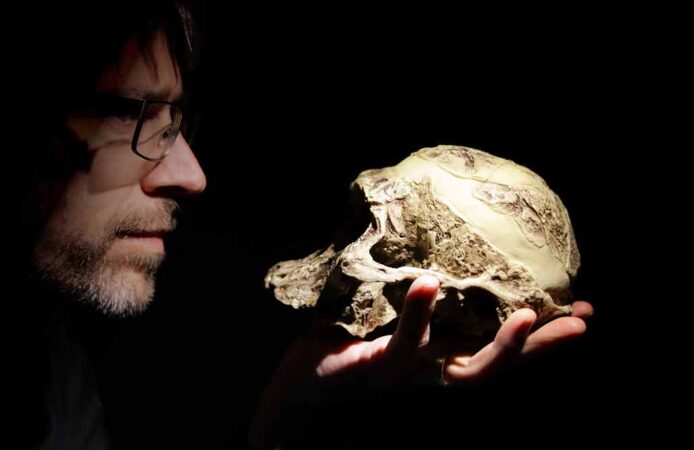
Against the establishment
Unlike Darwin, many evolutionists in the late 1800s and early 1900s had theorized that the human family tree was rooted in Asia. Some argued that Asia’s gibbons were our closest living relatives. Others reasoned that tectonic activity and climate change in Central Asia sparked human evolution. One naturalist even proposed that our origins traced back to a lost continent that had sunk into the Indian Ocean, forcing our ancestors to relocate to Southeast Asia.
By the 1890s, an Asian find emerged as the best contender for the earliest human ancestor. A crew led by Dutch physician-turned-anthropologist Eugène Dubois had uncovered a skullcap and thigh bone. It was found on Java, an Indonesian island. The thick skullcap had heavy brow ridges. Dubois estimated it once held a brain that was about twice as big as an ape’s and approaching the size of a human’s. The thigh bone indicated that this Java Man — later named Homo erectus — walked upright.
Europe had its own tantalizing fossils. Neandertals had been known since the mid-1800s. But by the early 1900s, they were largely thought to be cousins that lived too recently to shed much light on our earliest evolution. A seemingly more relevant claim came in 1912. An amateur archaeologist said he found humanlike bones near Piltdown, England. Fossils of extinct creatures came from the same site. This suggested the bones from this humanlike hominin, called Piltdown Man, were really old. Skull bones hinted he had a human-sized brain. He also had a primitive jaw and large, apelike canine teeth.
Some experts questioned whether the skull and jaw even belonged together. But British scientists initially accepted the claim — and not just because it implied England had a role in human origins. Piltdown Man’s features fit with the British establishment’s view of human evolution. That idea held that the first trait to distinguish human ancestors from other apes was a big brain.
So scientists were ready to be skeptical when Dart announced that he had found a small-brained, upright-walking ape with humanlike teeth in the southern tip of Africa, says Paige Madison. She’s a historian of science at the Natural History Museum of Denmark in Copenhagen.
One big problem: Dart’s fossil was of a 3- or 4-year-old child. Critics pointed out that a young ape tends to resemble people in some ways. However, those similarities disappear as the ape matures. Critics also complained that Dart hadn’t properly compared his fossil with those of young chimps and gorillas. What’s more, he refused to send his fossil to England where such analyses might easily be done.
In fact, this irked those peers in England. “It was unpalatable to the scientists in England that the young colonial upstart had presumed to describe the skull himself,” a scientist who knew Dart wrote much later. They felt he instead should have left its analysis to “his elders and betters.”
It’s hard not to wonder how the era’s colonialist and racist attitudes shaped perceptions of human origins. Back then, many Western researchers offered up this perverse idea that current Africans were more primitive than other peoples, perhaps even less evolved. Many of these scientists also wanted to believe Europe or Asia is where the human line got its start.
Some anthropologists acknowledged humans could have evolved in Africa. But deep-seated biases may have made it easier for some researchers to reject the Taung Child and accept Piltdown Man — even though fossil evidence for the Piltdown claim was also scant, says Sheela Athreya. She’s a paleoanthropologist at Texas A&M University in College Station.
Still, newspapers worldwide followed the Taung Child controversy.
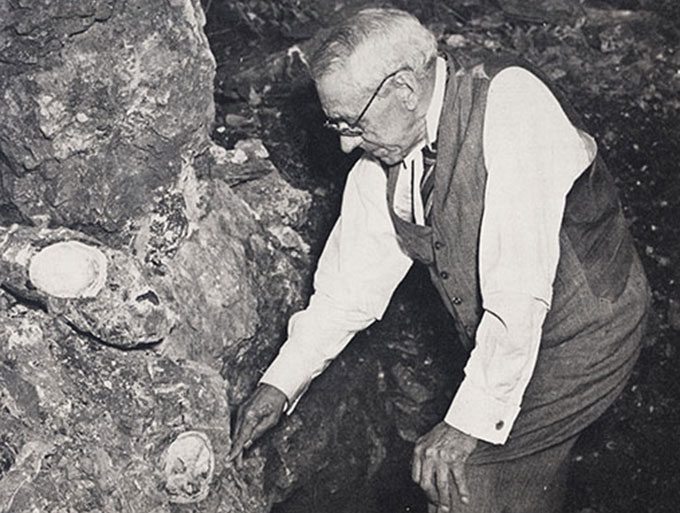
Amid it all, Dart convinced at least one well-known scientist: Robert Broom. The Scottish-born doctor, who lived in South Africa, was an authority on reptile evolution. He recognized that fossils of fully grown A. africanus individuals would be needed to confirm that the Taung Child’s humanlike qualities were retained into adulthood.
In 1936, Broom started to find that evidence. And he found it in caves not far from Johannesburg. Often using dynamite to free the specimens, Broom amassed a vast collection of fossils. They came from both the young and the old. Limb, spine and hip bones confirmed South Africa had been home to an upright-walking ape. And skull bones verified Dart’s suspicions that A. africanus had humanlike teeth.
Even the biggest doubters of Dart couldn’t overlook Broom’s evidence. Take British anatomist Arthur Keith. Back in 1925, he had called Dart’s assertions “preposterous.” Some 22 years later he reported “I am now convinced.” His apology came in a one-paragraph letter to Nature. In it, he now said “that Prof. Dart was right and that I was wrong; the Australopithecinae are in or near the line which [resulted] in the human form.”
And Piltdown Man? A few years later, in 1953, researchers exposed it to be a hoax. Someone had planted a modern human skull alongside an orangutan jaw with its teeth filed down. Many experts outside of England had never been convinced by the find in the first place. So it “was not a complete surprise when [Piltdown Man] was proved to be a fake,” reported Science News Letter (an early version of Science News).
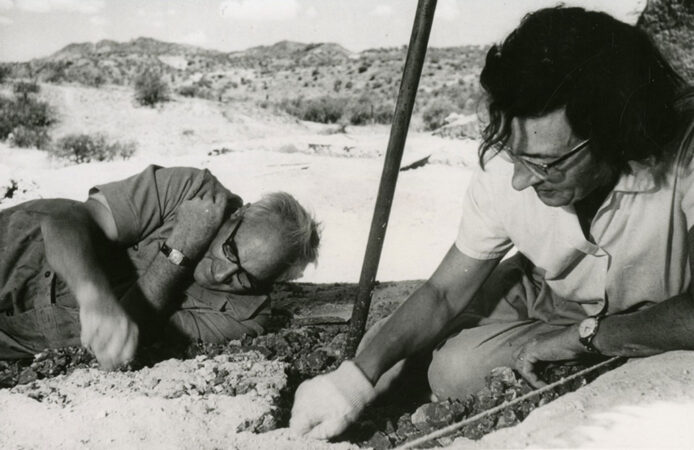
A series of surprises
It was ultimately a series of discoveries by the husband-wife team of Louis and Mary Leakey that firmly planted the idea of our origins in Africa. Louis had grown up in East Africa as the son of English missionaries. He long believed Africa was humans’ homeland. While Broom was mining fossils in South Africa during the 1930s, the Leakeys began exploring the Olduvai Gorge in a part of East Africa that is now Tanzania.
Year after year, the pair failed to find hominin fossils. They did, however, dig up stone tools. These suggested hominins once lived there.
So they kept looking.
One day in 1959, while an ill Louis stayed behind in camp, Mary discovered a skull with small canine teeth like Australopithecus. But this fossil’s giant molar teeth, cheekbones and bony crest along the top of its skull suggested something else. For its chompers, they nicknamed this fossil Nutcracker Man. Today the species is called Paranthropus boisei.
Until this discovery, figuring out the age of a hominin fossil was largely a guessing game. But new tools now allowed age calculations. In 1961, geologists used a technique that relies on the decay of radioactive elements. This potassium-argon dating showed the Leakeys’ skull came from a rock layer some 1.75 million years old. That was three times older than the Leakeys had suspected. (Later, A. africanus proved to be even older, living about 2 million to 3 million years ago.) The discovery vastly stretched the timescales on which scientists were mapping human evolution.
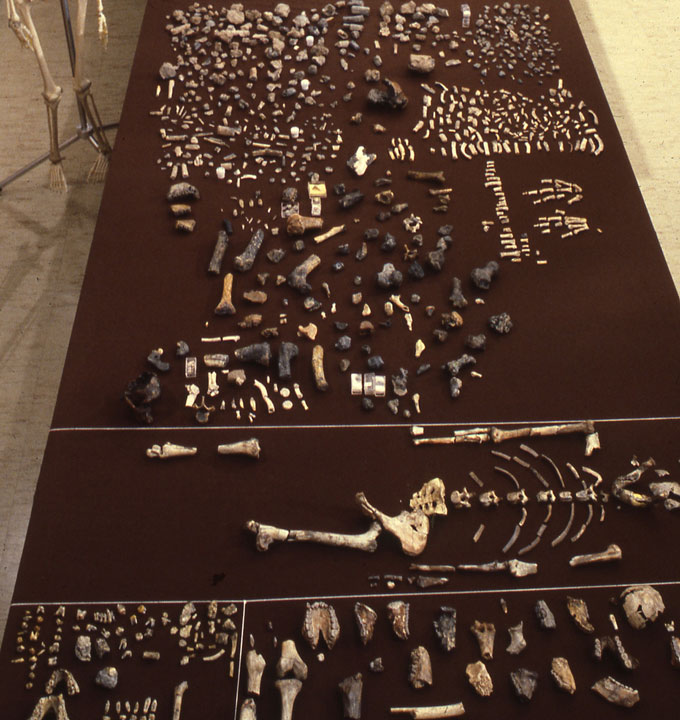
And the surprises didn’t end there. In the early 1960s, the Leakey team recovered fossils of a hominin that lived at roughly the same time as Nutcracker Man, but had more humanlike teeth and a bigger brain. Based on that brain size and details of its hand, the Leakeys argued that this species had made the tools found at Olduvai Gorge. In 1964, Louis’ team placed it in the human genus with the name Homo habilis, or handy man.
The discoveries at Olduvai Gorge kicked off a fossil gold rush in Africa. A 1974 discovery in Ethiopia, for instance, once again expanded the timescale of human evolution. It was one of the most famous discoveries of all. A nearly 40 percent complete skeleton was found. Called Lucy, she was the most complete example of Australopithecus afarensis, a species from 3.2 million years ago.
Since then, more fossils have stretched the hominin fossil record in Africa back even further — to some 6 million or 7 million years ago. That’s about when ancestors of people and chimps likely parted ways.
On the origin of our species
Still, one big question remained: Where did Homo sapiens, our species, emerge?
In the mid-1980s, anthropologists had a basic picture of our evolution: Hominins had arisen in Africa. Nearly 2 million years ago, H. erectus became the first of our ancient cousins to venture outside of Africa. In some places, H. erectus persisted for a long time. Elsewhere, new groups appeared in Europe and Asia. Somehow, at some point our species arrived and all others disappeared.
Since then, that “somehow” has been at the center of a lot of debate. And over just the last decade, genetic and fossil revelations have helped to sharpen an ever more complex picture of our origins.
One emerging view suggests that much of early human evolution occurred in Africa. Yet there was no one place on the continent where H. sapiens was “born.” Starting at least 300,000 years ago, fossils with modern H. sapiens features started to show up. But these features didn’t all arise at the same place.
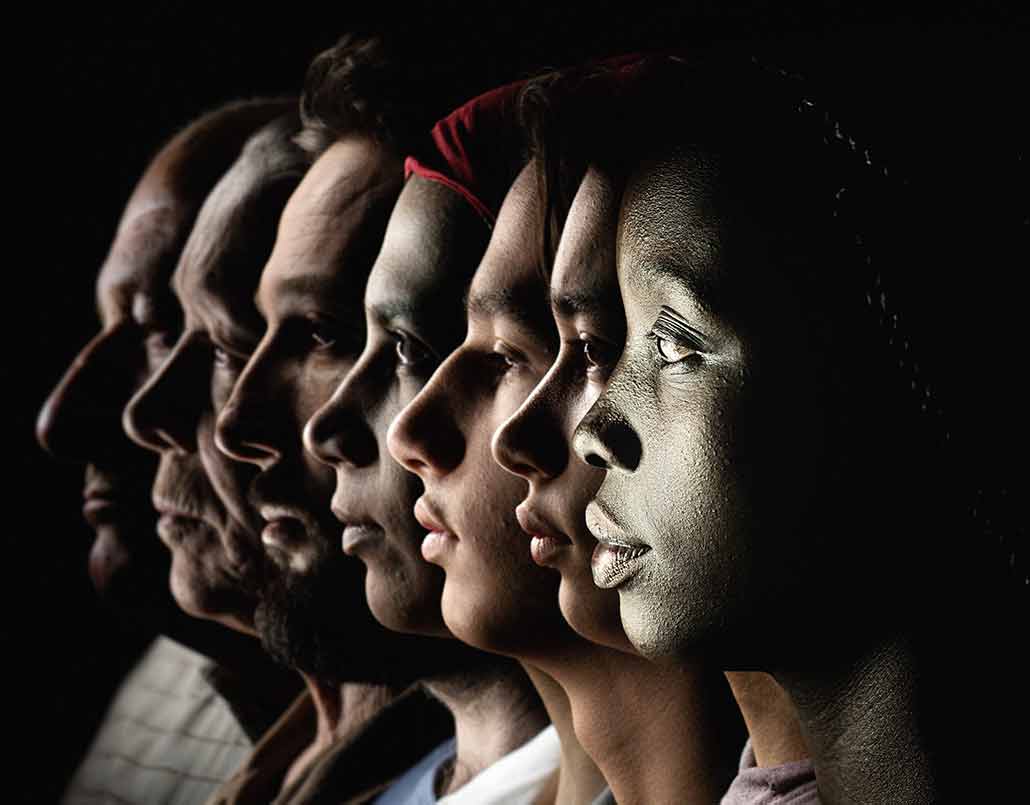
Only through the mating of different populations across Africa did the suite of behaviors and other traits that define us today come together, says Eleanor Scerri. She’s an evolutionary archaeologist. She works at the Max Planck Institute for the Science of Human History in Jena, Germany.
“Our origins lie in the interactions of these different populations,” she says. Little is known about those interactions. Why? She says it’s because scientists have explored so little of ancient Africa.
There’s still much to explore in other parts of the world, too. One single explanation of how our species evolved may never be possible, says Athreya, at Texas A&M University. The reason: Different processes likely shaped human history in different parts of the world.
Better understanding of our roots will come from new discoveries, tech advances and, importantly, new perspectives. For the last 100 years, our origin story has been told by mostly white, mostly male scientists. Welcoming more diverse groups of scientists into these studies, Athreya says, could reveal big blind spots and biases as they add to and amend the tale.
This is, after all, everyone’s story.







